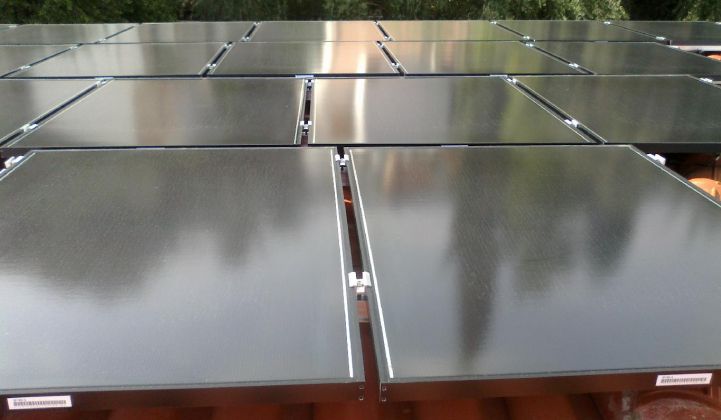Solar Frontier, the world’s second largest thin-film solar module supplier, announced its intention to acquire the 280-megawatt U.S. project pipeline of Gestamp Solar, a developer and operator of utility-scale solar plants -- along with Gestamp's U.S. development team. Gestamp Solar is backed by the $13 billion industrial holding group, Corporacion Gestamp.
This is a major shift for the Japanese CIS thin-film solar vendor. Over 90 percent of Solar Frontier's 2014 production (close to 1 gigawatt) went to domestic Japanese installations, according to GTM Research solar analyst Jade Jones.
Acquiring a turnkey project pipeline is an efficient way of entering the U.S. market that will deliver short-term gains -- the race is on to originate and develop projects before the expiry of the 30 percent federal ITC. But GTM Research sees the utility market peaking in 2016. (Tam Hunt discusses the potential of the small utility-scale market here.)
Atsuhiko Hirano, CEO of Solar Frontier, commented in a release, “The U.S. downstream expansion is part of Solar Frontier’s growth strategy to accelerate our business in key global markets through 2015 and beyond."
We spoke with Charles Pimentel, CEO of Solar Frontier Americas Development, on Monday morning. "A key part of the transaction is that all or most of Gestamp U.S. will get hired by Solar Frontier Americas, and we will have a development team in place," said the CEO, adding that the company will be going after utility-scale projects in the Central Valley and Southern California. According to Pimentel, the "sweet spot in the U.S. is 5 megawatts to 50 megawatts." The company isn't interested in projects larger than 100 megawatts, nor is it limited to California.
Solar Frontier's annual capacity is about 900 megawatts in its existing plant, with another 150 megawatts coming on-line in one month, according to Pimentel. Jones of GTM Research said that the company shipped 900 megawatts in 2014. The CEO told GTM that module efficiency for its 170-watt module is 13.9 percent. Solar Frontier has supplied nearly 3 gigawatts of CIS modules since its founding.
The leading thin-film solar firm is vertically integrated First Solar. Its cadmium-telluride PV material has allowed it to achieve best line efficiencies of 15.8 percent.
The CEO also pointed out that the projects are "almost exclusively on single-axis trackers in California."
Pimentel emphasized that Solar Frontier remains "strictly a module manufacturer" that is making a foray into project development. "The objective is not to own the projects long-term."
This type of acquisition seems like part of the ongoing trend among upstream solar manufacturers to move downstream and capture some of the value in installation and project development or to enter new regions. This charge was led by First Solar and SunPower, and later by MEMC's acquisitions of SunEdison and Axio Power, as well as by Hanwha's downstream plays. Last month, Canadian Solar acquired developer Recurrent Energy from Sharp Corporation for $265 million. Recurrent will be operated as an independent subsidiary.
Recently, AES acquired Main Street Power of Boulder, Colorado, a developer of distributed solar projects in the 300-kilowatt to 5-megawatt range. That acquisition also follows the recent trend of utilities and financiers acquiring developers -- Duke's acquisition of REC and Coronal's acquisition of HelioSage are two more examples. Jonathan Jaffrey, CEO of Coronal Group, said, "If there is a reduction in the ITC, then being able to control the project from development to asset management will give that platform a leg up in the market." He spoke of reducing "multiple margins" and "points of friction."
Solar project developers with strong project pipelines remain hot properties with the end of the federal Investment Tax Credit looming and YieldCos needing new projects.



